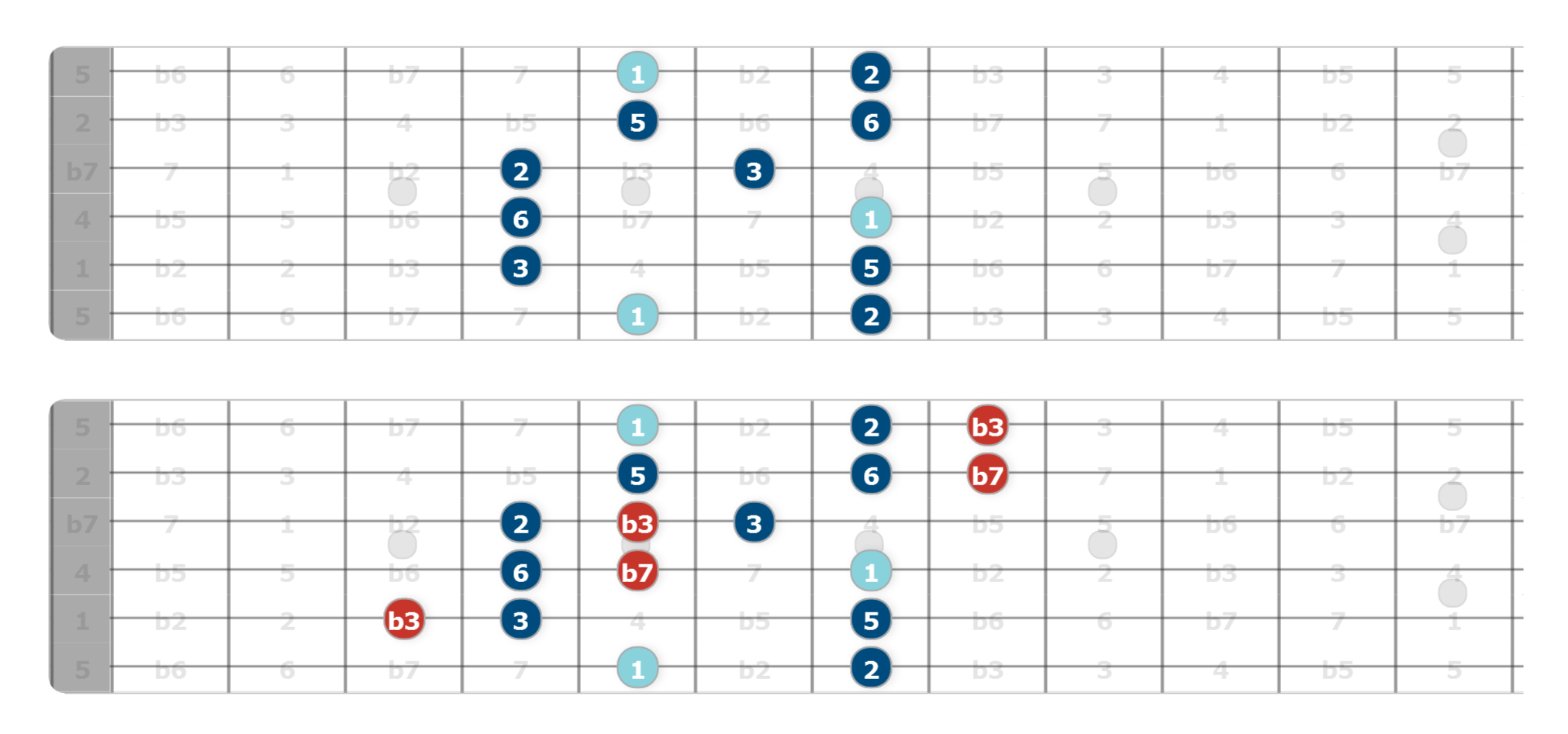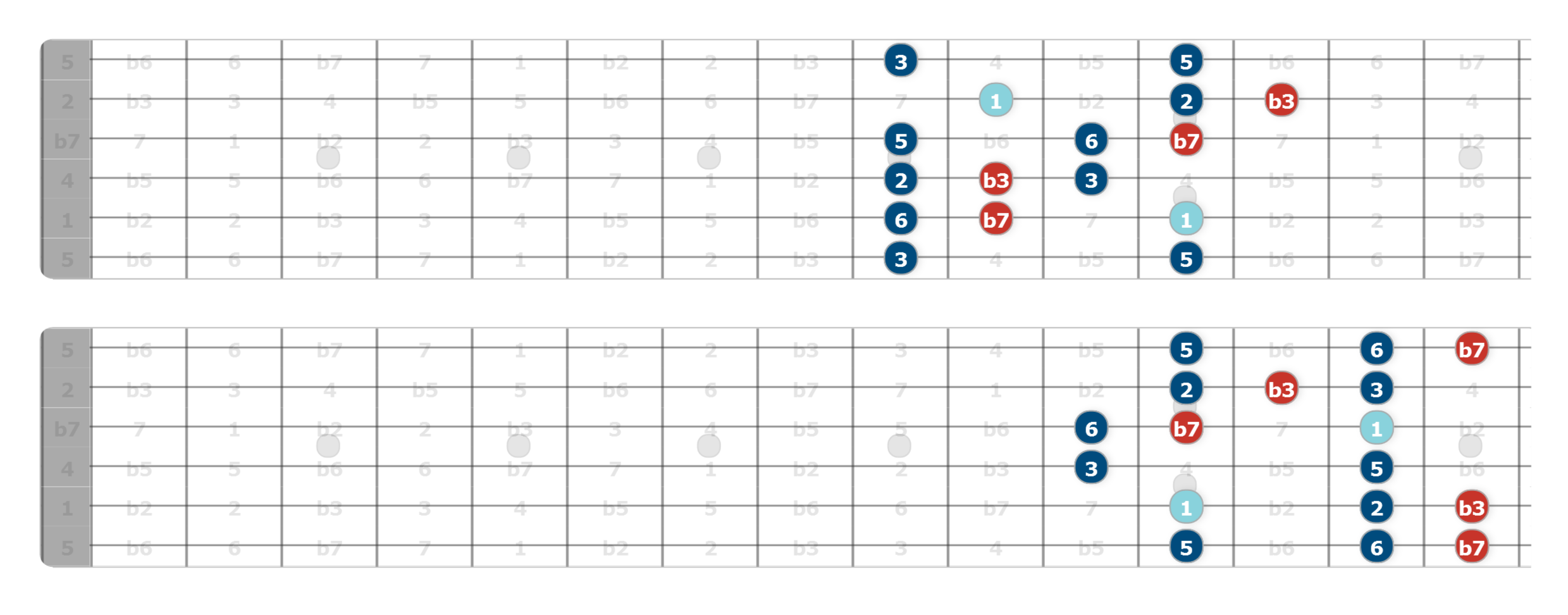There’s something about the major pentatonic scale that seems very dry to me, which can be a good thing because it lends itself well to being combined with other concepts such as the minor pentatonic in a blues or with a couple of added notes to create the modes. In this lesson, we’re going to look at another way to spice up the major pentatonic scale that involves adding a couple of carefully selected chromatic passing tones into the mix. If you’re unsure about the idea of chromatic passing tones, this will be a good place to start.
Look at the following two diagrams. We have our classic A Major Pentatonic shape, then A Major Pentatonic with our chromatic notes.

We spice up the major pentatonic scale by adding the b3 and the b7 to have three semitones in a row (2, b3, 3), as well as having the b7 in there to create some extra tension. This works because the scale still sounds essentially ‘major’ to our ear, although now it has a less vanilla sound because of the passing notes. For me, it gave me that bluesy sound I was always looking for with the major pentatonic but could never quite find with just the basic scale on its own.
I suggest taking the time to get a feel for the scale, how those chromatic tones fit into it, how you can best use them, and their role as notes that you probably won’t want to hang around on for too long.
This scale is well-worth spending some time with, so let’s look at the patterns that go either side of the one above.
This next pattern falls nicely under you fingers due to it being one finger per fret and has the potential for some great licks; remember that you can also play this same pattern up at the 14th fret.

Here’s the pattern that goes the other side of our main/classic pentatonic box area.

After experimenting with these patterns for a while, you should be get a feel for what notes you can hang on and what notes you need to ‘skate over’ to get that chromatic effect. If you’re just getting into this kind of thing, the three patterns above will be more than enough to spice up the major pentatonic scale; but if you’re hungry for more, here are the other two patterns you’ll need to complete the picture.

If you like pentatonic scales as much as I do, there’s plenty more pentatonic ideas here. You can also pick up a free PDF version of our Pentatonic Soloing System.




How many pages is your pentatonic PDF book?
Which one? There are a few.